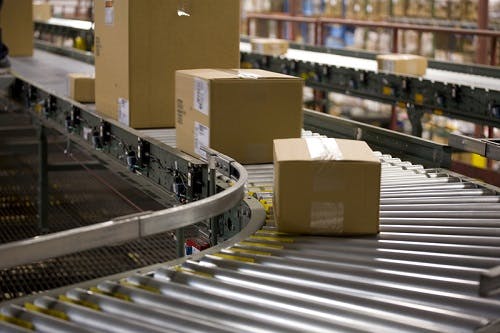As an entrepreneur selling a product, odds are you are dreaming big in terms of distribution. Your path may have started by selling hyper-local in mom-and-pop shops, or on a website or two, but now you feel ready to take that next step and sell through a major retailer.
Before making connections with retailers through RangeMe and ECRM, take a step back and make sure you are fluent in your target retailer’s supplier guidelines. Don’t lose sight of the fact that you need to successfully sell yourself and your product to the retailer first before leveraging their platform to sell to consumers. But you will also need to demonstrate that the business is credible and that you’re fully capable of fulfilling orders. Do you have the right knowledge to talk the talk with your future retail partners?
Here’s how decoding a few supply chain best practices can boost your ability to scale.
Understanding the landscape
When your goal is to leverage a retailer’s platform, you’re going to have to play by the retailer’s rules. A basic requirement of selling anywhere, outside of maybe your local farmer’s market, is to properly and uniquely identify your products.
To do that, sellers are encouraged to leverage trusted, widely accepted, global standards like those from GS1 US. Keep in mind, working within an infrastructure that supports the retailer’s systems and reputation is beneficial to your growth and standards serve as a common language for business communication.
Perhaps the most well-known standard is the Global Trade Item Number (GTIN). The GTIN is a globally unique product number encoded into a UPC barcode that also appears below the symbol’s black lines and spaces. It facilitates inventory management throughout the retailer’s supply chain and helps assure the product’s legitimacy. Think of it like a fingerprint that identifies your product anywhere throughout the global supply chain. And, according to Google, products that include GTINs have a 40% higher click-through rate!
Beyond the GTIN, it’s likely that you will need to comply with more complex business requirements.
An elevated standard

While perusing the supplier guidelines of major retailers like Walmart, Target, Nordstrom or Dollar General , you may come across the term Electronic Data Interchange or its acronym, EDI. It might seem like just another acronym to learn, but EDI is extremely prevalent for order automation and underpins much of the retail supply chain.
Here in the US, many of the major retailers and logistics providers require the use of EDI to send and receive digital documents to their suppliers, the most common of which are purchase orders (POs), invoices and advance ship notices (ASN).
Though it doesn’t remove the necessity for human checks and balances, EDI’s automation of much of the process enhances accuracy and confidence in each step. When a PO is input through your order management system, EDI can automatically notify the sender and your fulfillment house, eliminating the need for multiple email confirmations. Via EDI, your enterprise resource planning system can also provide an ASN and invoice once the goods ship, ensuring all parties receive validation of receipt.
Lin Jiang, founder of Yishi Foods, an Asian inspired oatmeal brand that sells through Whole Foods and Walmart, started with manual, paper-based data systems before implementing EDI. “We didn’t have EDI when we launched our brand,” said Jiang. “We learned through distributors and retailers that it’s just an easier way to get POs and invoices out. So, once we started using that, life became a lot easier.”
Once you learn from your trading partners about their EDI requirements, preferences and capabilities, decide what EDI solution fits with both your trading partners’ needs and your capabilities. You can find an EDI provider who can help you get started by using the GS1 US Solution Provider Finder.
Putting it all together
Tamecca Seril, founder of FOLKUS, a company that manufactures sustainable paper products inspired by Black culture, has leaned into GS1 Standards to grow her business. “You can’t successfully leverage RangeMe or break out on Shopify if you don’t have a basic understanding of GS1 Standards like GTIN, EDI, etc. It makes communicating with another software or platform easier. I wish people realized how accessible and important it is to scale your business,” said Seril.
When entrepreneurs (and businesses of all sizes) leverage the power of GS1 Standards and capability of EDI, they can see not only see increased productivity, but potentially broaden the reach of their organization.
Crane, a company that manufactures unique humidifiers now sold around the world, has harnessed the power of EDI by working with a renowned solution provider to increase supply chain visibility, retailer satisfaction and productivity, all while driving toward a fully integrated supply chain (from source to sale).
A more collaborative, efficient and happier way of doing business is possible when trading partners are unified in the way they share information in a standardized way. Leveraging the power of EDI can take your business to the next level and potentially position you for a big breakthrough. For more information, please visit the GS1 US website.

